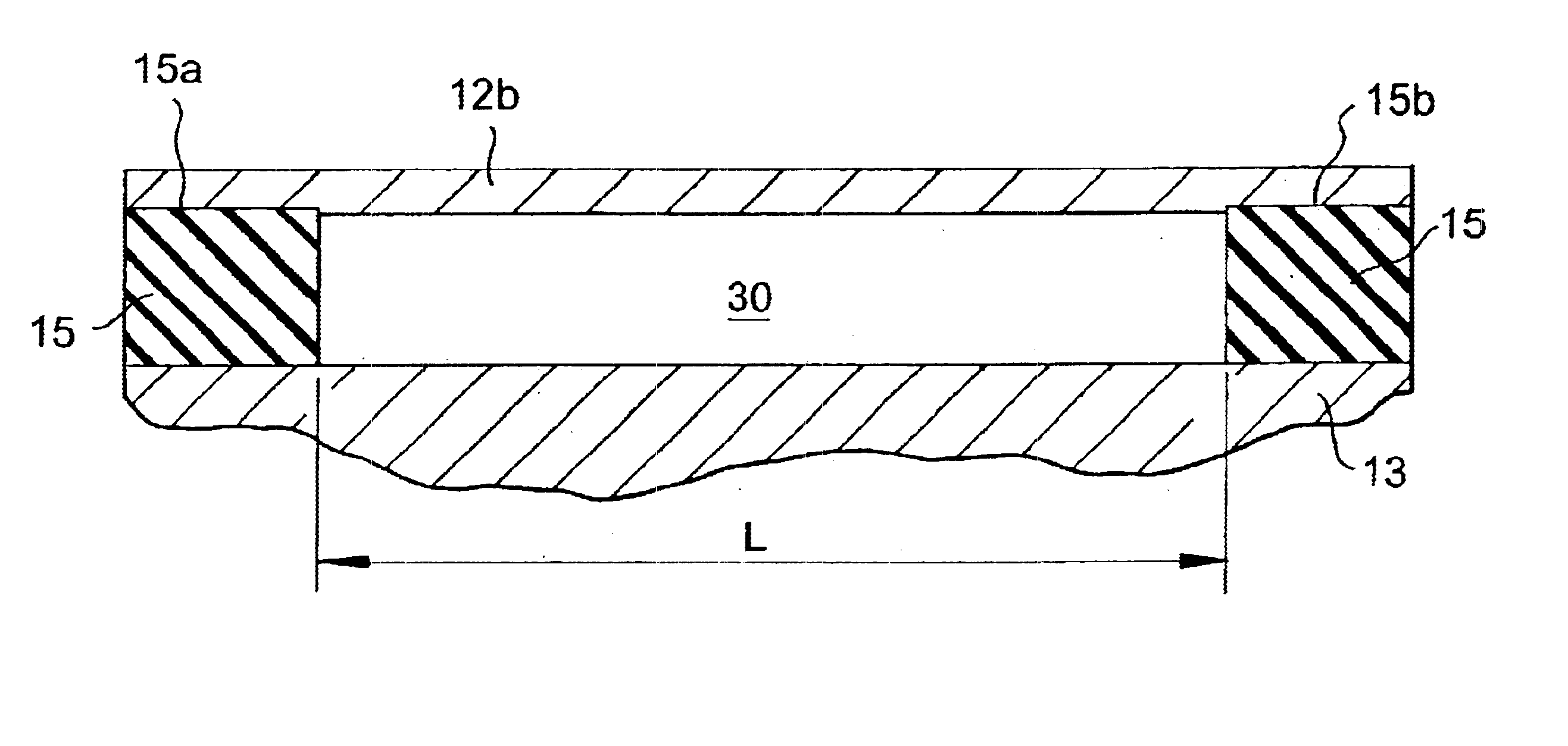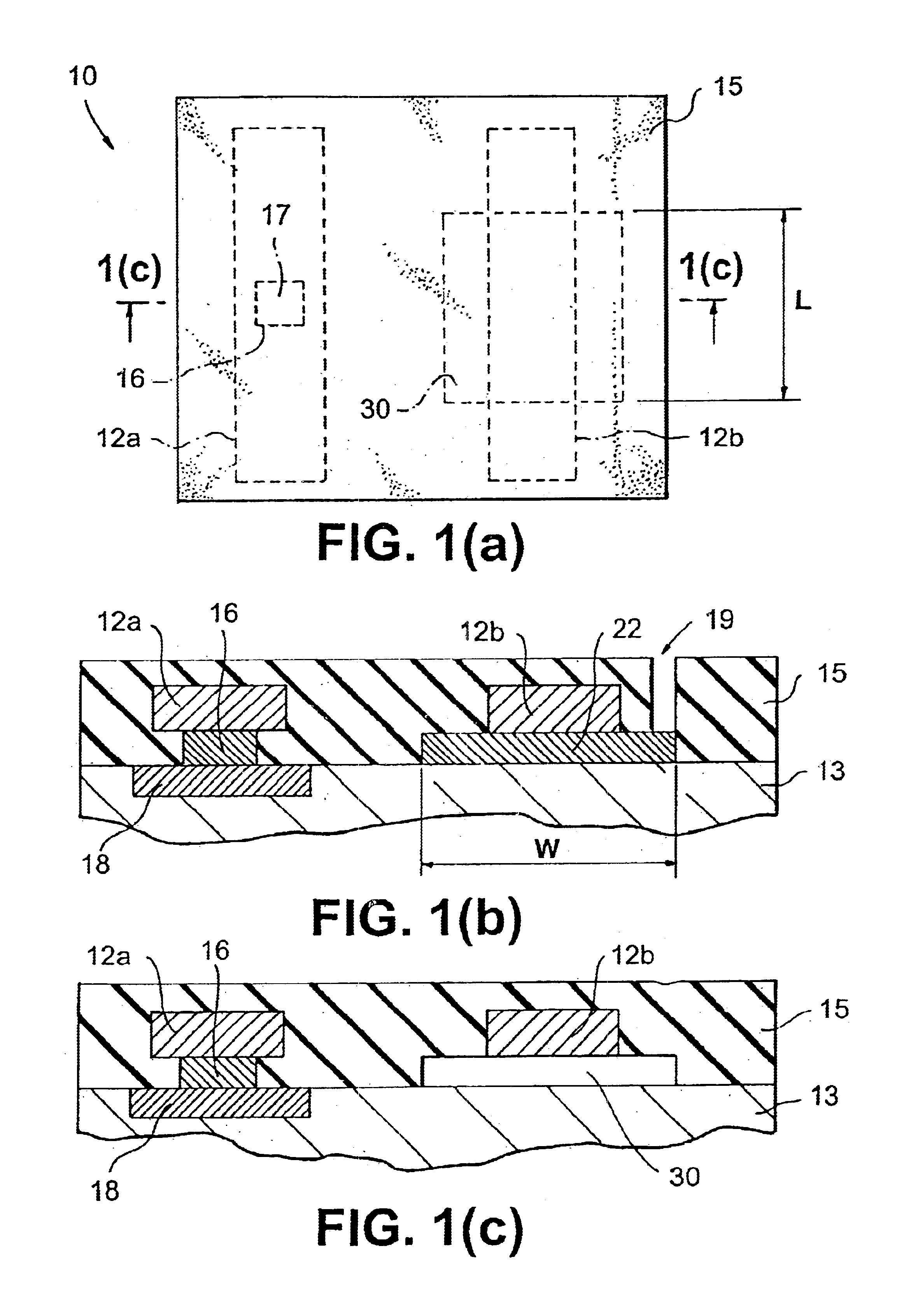Electronic fuse structure and method of manufacturing
a fuse device and electronic technology, applied in the direction of semiconductor devices, electrical equipment, semiconductor/solid-state device details, etc., can solve the problems of complex manufacturing of each of these fuse devices in the prior art, and many processing steps
- Summary
- Abstract
- Description
- Claims
- Application Information
AI Technical Summary
Benefits of technology
Problems solved by technology
Method used
Image
Examples
first embodiment
Further according to the principles described herein with respect the invention, a process is implemented to provide an air gap below two or more interlevel conductors. FIG. 2(a) illustrates a top view of a resultant fuse structure 20 including two conductors 12a, 12b each of which is a gap conductor having a gap 40 formed thereunder. Insulative material 15 is shown surrounding each of the conductors and the gap. As shown in FIGS. 2(a) and 2(b), an enlarged stud 36 of a typical composition material such as Ti / TiN liner filled with Tungsten, such as used in 64-1 Gb DRAM processing, is formed atop the insulative substrate 15, with each of the conductors 12a,b formed thereon in a subsequent processing step. An insulative layer 15 is then formed atop the conductive and underfill (stud) layer in a subsequent step. The enlarged stud 36 is to be used as a sacrificial gap-conductor underfill, with the underfill region 36 preferably designed to have a width "W" overextending the width of eac...
second embodiment
Finally, the via 49 is filled with insulator and the structure is planarized to result in a gap-conducting structure having gaps on all sides of the conductor 12b as shown in FIG. 3(c). Further according to the principles described herein with respect to the invention, a process is implemented to provide an air gap above and below two or more interlevel conductors. FIG. 4(a) illustrates a top view of a resultant fuse structure 60 including two conductors 12a, 12b each of which is a gap conductor having a gap region 55 formed thereabout. Preferably, both the underfill and overfill layers are designed to occupy a width "W" overextending the width of each conductor 12a,b, as shown in FIG. 1(a), and has a pre-defined length "L" which is less than the length of the corresponding conductor.
As shown in FIG. 4(b), an underfill layer stud 65 of width W and length L is first provided, as described above with respect to FIGS. 2(a) and 1(b), and, in a metallization step (Al or Cu), the respecti...
PUM
 Login to View More
Login to View More Abstract
Description
Claims
Application Information
 Login to View More
Login to View More - R&D
- Intellectual Property
- Life Sciences
- Materials
- Tech Scout
- Unparalleled Data Quality
- Higher Quality Content
- 60% Fewer Hallucinations
Browse by: Latest US Patents, China's latest patents, Technical Efficacy Thesaurus, Application Domain, Technology Topic, Popular Technical Reports.
© 2025 PatSnap. All rights reserved.Legal|Privacy policy|Modern Slavery Act Transparency Statement|Sitemap|About US| Contact US: help@patsnap.com



